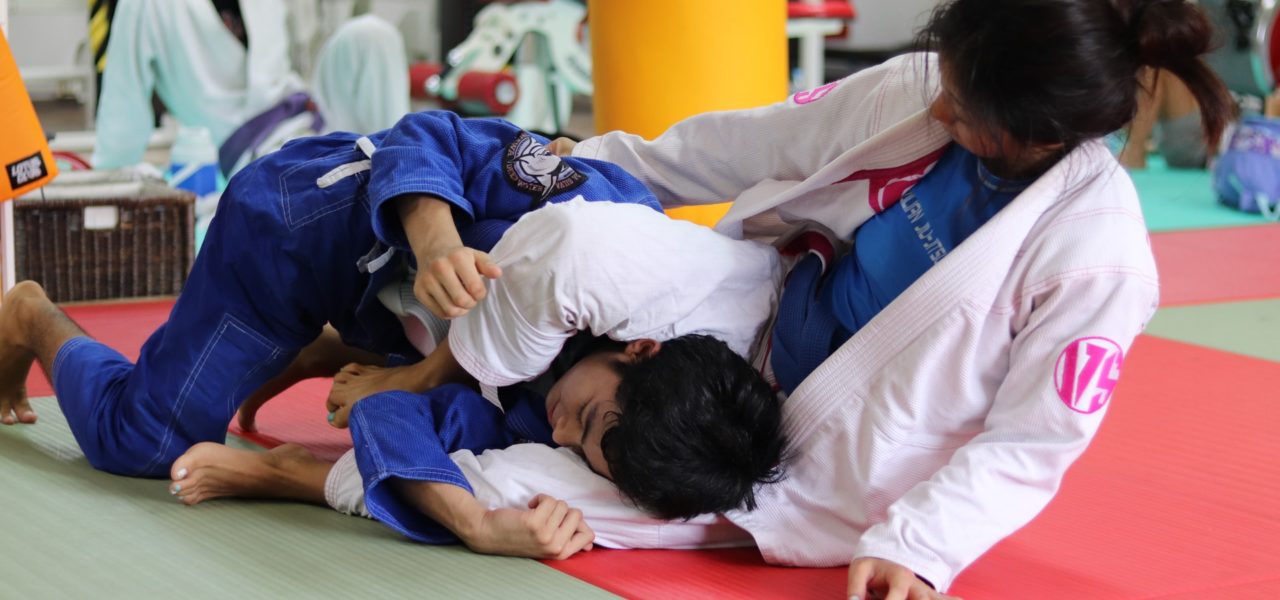Your cart is currently empty!
How to overcome the fear of blows in combat sports?
Receiving a blow to the face, body or legs is not a natural part of life: it’s an experience that, although normal in martial arts practice, goes against everyone’s instinct for self-preservation.
This is why, faced with the possibility of receiving a blow, fear instinctively forms. This fear of getting hit can freeze you, make you less confident and prevent you from realizing your sporting potential.
During a fight or sparring session, it’s very easy to spot someone who’s afraid of being hit: their movements become restricted, their body retracts and the reactions they’ve practiced in training are no longer applied.
Conversely, a fearless fighter displays confidence, moves a lot and is fluid in his movements. The more you are able to overcome your fear of being hit and injured, whether it’s your body or your ego, the better you’ll be able to perform during a fight.
That’s why it’s important to exploit this painful aspect of the combat sport you practice to reap other benefits, namely fitness, self-confidence, resilience and respect for other sportsmen and women.
Table des matières
Receiving blows in combat sports: a constant in training
When you choose to take up a combat sport, you automatically accept the fact that you will inevitably receive blows. But if you’re constantly on the move, if you’re quick and strike back, you’ll forget to be afraid because your mind will be too busy trying to avoid the next blow while preparing for the next attack.
That’s why the best way to eliminate the fear of being hit is to practice reacting to blows and simulate your blocks and dodges.
Blocking and dodging exercises
The most fundamental step in overcoming fear is to work on the basics. You need to practice dodging and blocking until these movements become natural. It may take months or even years of training before you can do these movements without thinking.
To speed up your learning, choose just one or two dodges or blocks and apply them as much as possible in your training. By focusing your attention on one or two defensive movements, you’ll quickly learn the limits of what works and what doesn’t, much more quickly than if you tried to learn 20 movements at once.
A very common way to overcome the fear of taking blows is controlled exposure. Coaching sticks are an excellent tool for practising dodging and blocking blows. Your training partner will have to make sure he pushes you hard enough to get you to the limits of your abilities. If your partner is too slow or too obvious in his strokes, you won’t learn anything. Conversely, if all your partner does is hit you all the time, you won’t learn anything either. An important part of this exercise is getting hit, and getting hit often. It’s a way of telling your brain when you’re too slow, when you’ve dodged the wrong way or when you haven’t been paying attention to a potential move.
After a while, you’ll get to know your abilities and what you’re capable of.
Taking blows with protectors or behind the bag
Practice being hit by your partners, preferably with controlled blows. Jabs and hooks, side kicks and push kicks are all good training tools.
One way to do this is to stand behind a punching bag and let your partner punch. His strikes should be controlled at first and slowly increase in speed and power. By standing behind the mat or punching bag, you’ll get an idea of the strength that lies within. Sometimes the fear of not knowing what’s going on when you’re hit is scarier than actually being hit. That’s why it’s important to feel the force of a blow to familiarize yourself with it.
Another more advanced way to train is to stand in front of your partner and ask him or her to hit you lightly. The aim is not to hurt, but rather to feel the sensation of a foot on your chest or a shinbone on your ribs. A protective helmet can also be useful for feeling the force of a blow while mitigating the pain.

A few practical tips
When you’re training with someone at a much higher level than you, pay attention to the power and intensity of your strokes. The greater the force you use, the more you signal to your partner that you can take harder, faster blows.
Stroke simulation
To reduce the startle reflex and get used to overcoming the fear of blows to the face, stand in front of your training partner and lower your hands and chin. Your partner must then land punches in front of your face and body. First slowly, then quickly. So try not to blink every time the shot approaches.
Don’t stop moving!
A practical way for beginners to overcome the fear of blows is to learn to move without fear: attacks should be launched without hesitation and movements executed without thought. It takes time, but progress is a long-term process.
When approaching your opponent, keep your guard up. When you’re out of range, you can’t be hit. So don’t hesitate to stand up straight and move around freely.
Control your typing speed
It’s also important to train at different speeds. Time yourself for 30 seconds at a slow, medium and fast pace. Practice fundamental movements and strikes at fast speeds. See how many kicks and punches you can do in 10 seconds as a benchmark.
After a few sets of exercises, you should feel more confident moving at a faster pace. Continue this training until you feel a sense of control, even when punching and kicking as hard and fast as you can.
Finally, simplify your movements as things speed up. When combat becomes fast-paced, you need to simplify your movement options. Forget complicated sequences that you can barely perform. When things get fast and hard, remember the moves you learned in your first week of class.
These exercises are designed to help you overcome your fear of being hit and move forward in your training. However, it’s very important to master defensive postures, basics and striking movements before embarking on this step.







